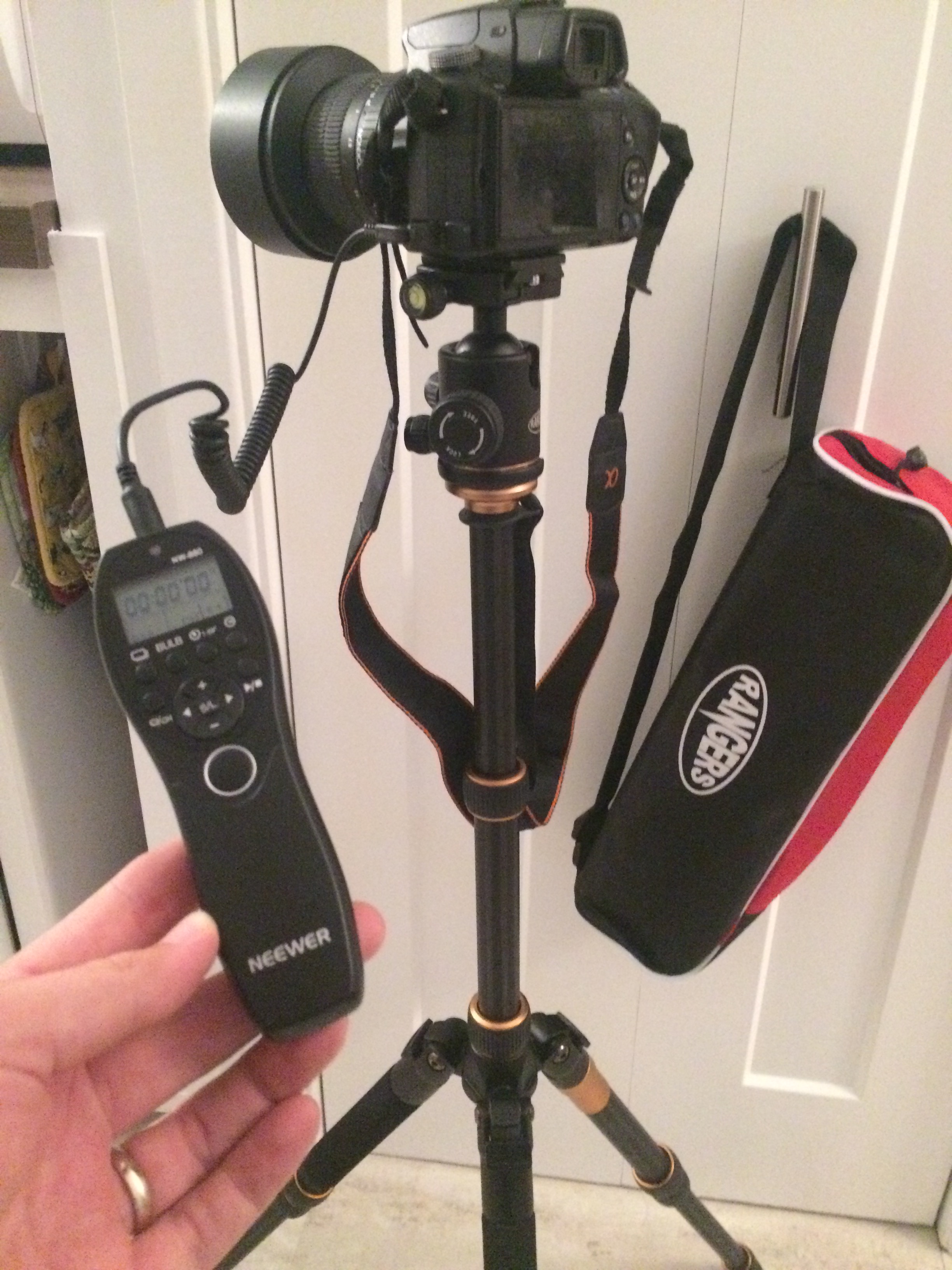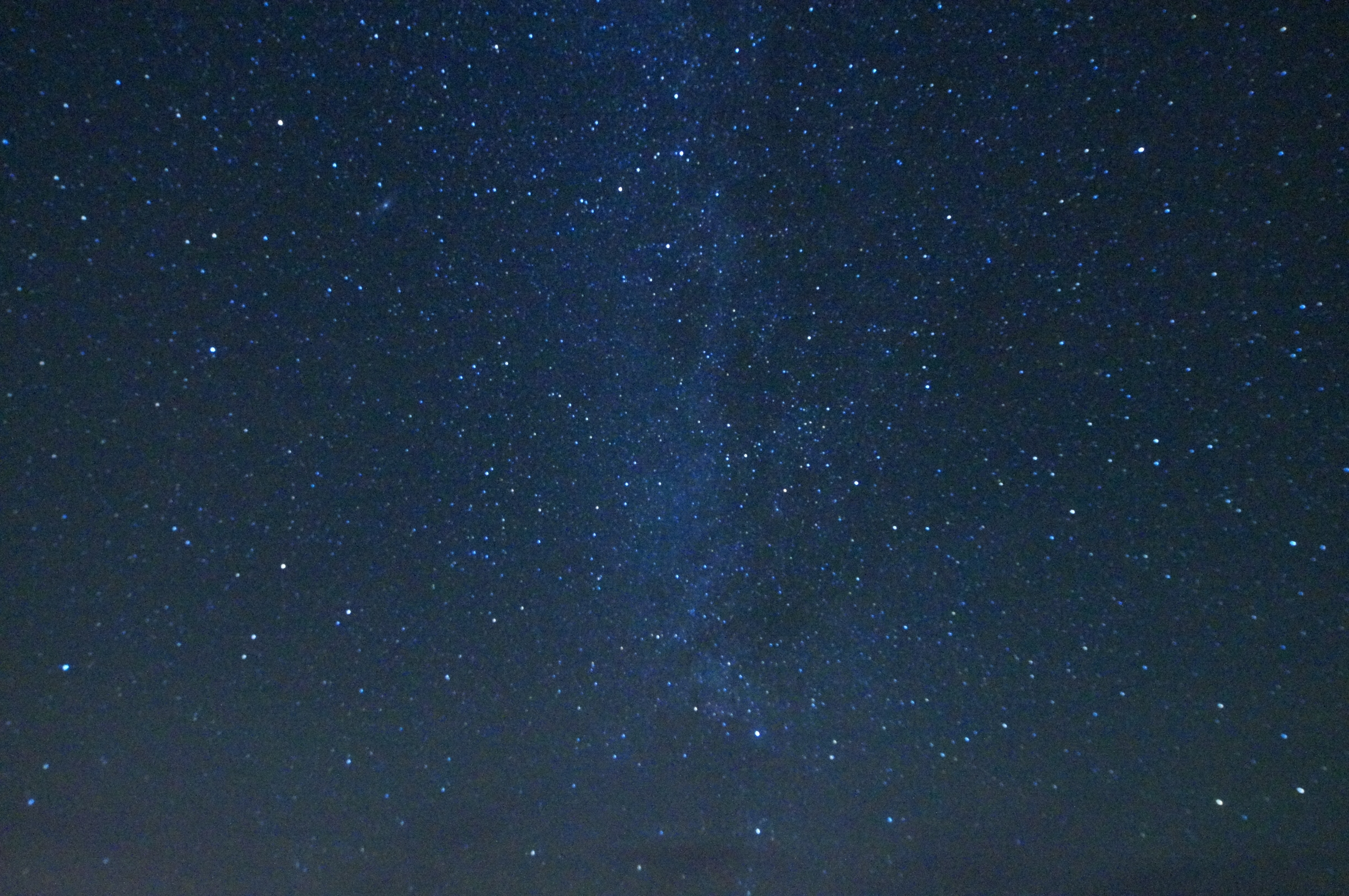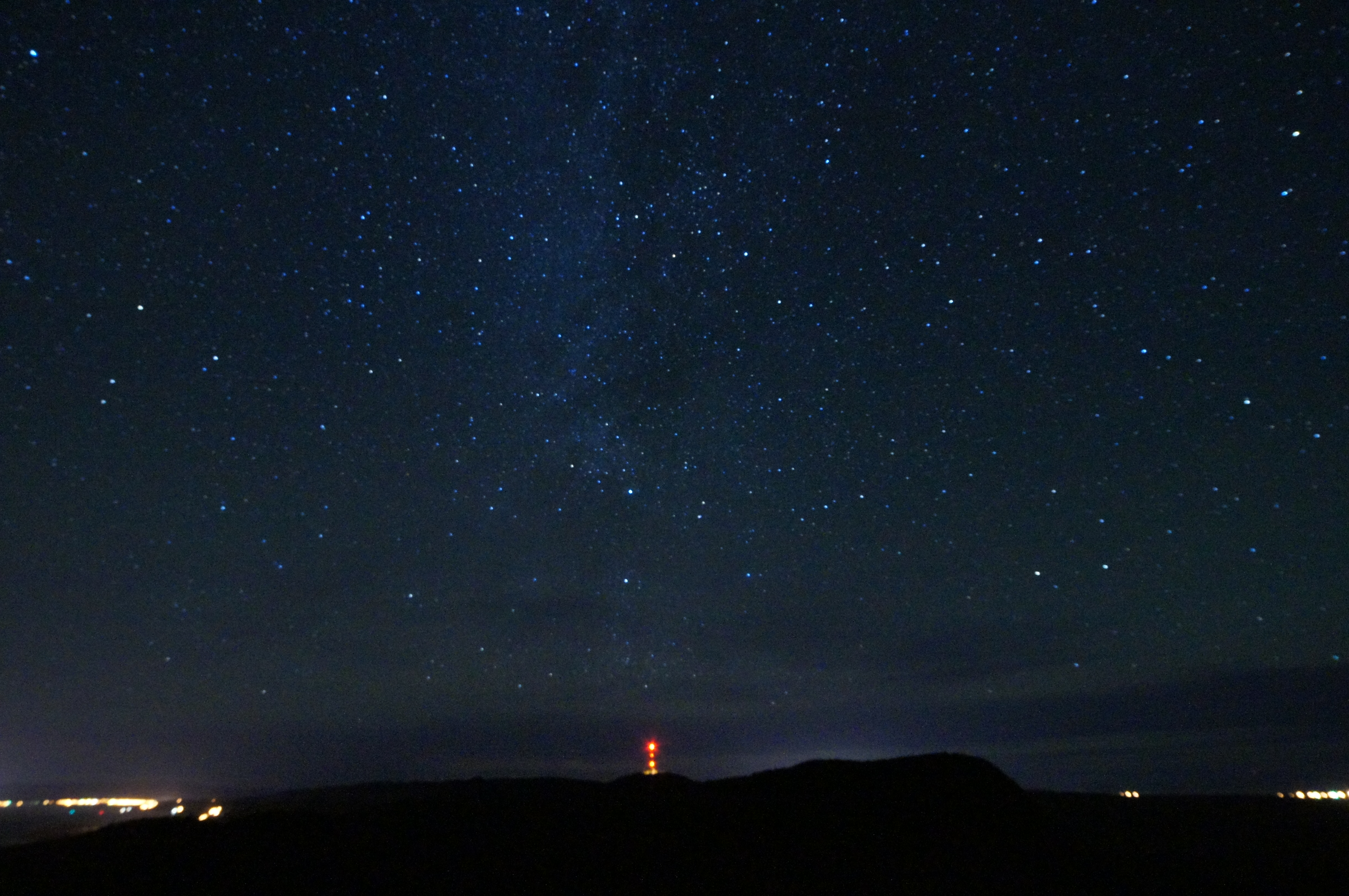An early morning hike up a cliff is a (steep) price to pay to photograph the night sky.
After my previous/first attempt at astrophotography, I had some things to do: I needed a tripod, a better intervalometer, and definitely some more practice.
Tripod first: After some more comparison shopping, I settled on a Rangers (Q-666C) Carbon-Fibre tripod. It’s got a ball-head, includes a mono-pod, and has carbon-fibre legs, which improves the sturdiness and decreases the weight. It seems well designed so far. There’s a good video review by Osman Carim.
For the intervalometer, I chose the Neewer. It’s well rated and has multiple advanced functions.
One downside is the manual is confusing, mostly because it is poorly translated from Chinese. Here’s an example instruction from it:
“Please not put our product in high tempura area.”
Luckily I take photos outside, and not in a sushi restaurant. Ignoring the manual, I found that Joe’s Photo and Video Channel is the best way to learn how to use the gizmo.

Rangers ball-head carbon-fibre tripod and Neewer intervalometer
With the tripod and intervalometer sorted, my next task was clear: more photography practice.
The Hike of Darkness
This morning I woke up at 1 am, which is a completely uncivilized hour, in order to hike up to Mont St-Alban lookout in Forillon National Park. I thought the tower would be a great spot to take pictures of the night sky, without interruption or light pollution.
The trail to the lookout tower, which is straight up a towering cliff, is 1.8 km and a steep 280 metres above sea level (where the parking lot is located). The hiker’s pain is rewarded with unmatched views of the Forillon peninsula and the St Lawrence seaway.
With a bright Tikka Petzl headlamp lighting the way, I hoofed it up the steep trail, huffing and puffing and making as much noise as I could to scare away any bear or moose that might be ahead of me. All I saw were porcupines (which always have the right of way).
At the top, the wind was cold and blustery but the view was stupendous. The bright lights in the pictures below are (respectively) the town of Gaspé in the distance, and nearby Cap-des-Rosiers lighthouse.
I decided to experiment some more with my camera settings. Here is the same shot of the Milky Way, one with 12800 ISO and one with 3200 ISO settings:
Overall I feel as though I got better results this second time around. I still haven’t done any image processing, but that’s on the agenda at some point.
More Lessons
- The tripod worked out great – it was light and easy to carry on a steep hike, sturdy and wind-resistant at the top of the lookout, and quick and easy to fold and unfold.
- The intervalometer also worked well – I used the bulb setting mostly, and took 30 second shutter snaps, consistently and conveniently.
- Experimenting with the camera settings led me to increase the ISO setting I have been using, to about 1600 to 3200 for best results (previously my range was 400 to 1600). I tried 12800, the highest ISO rating on my camera, but found that the results were too grainy.
- My chosen Rokinon lens has some quality control problems. The first lens had a scratch inside the lens which only appeared at low f/numbers. The replacement I just got has developed a black dot inside the lens after only a couple of days of use. I’m now debating whether to exchange the second lens for yet another replacement, or just get my money back and save up for a weather-sealed (but pricey!) lens.
- The Tikka petzl headlamp is very useful – the bright halogen lit my way up and down the trail, while I used the red light switch at the top to preserve my night vision and avoid ruining the photos I was taking.

Milky Way and dust clouds
This morning was pretty exhausting, but also very peaceful and enjoyable. It’s a fun hobby, so far.
Early to bed, tonight.



